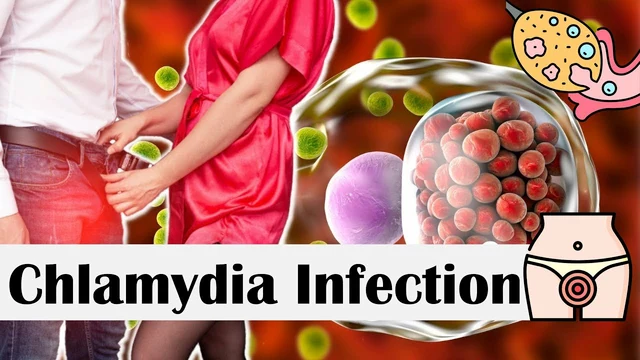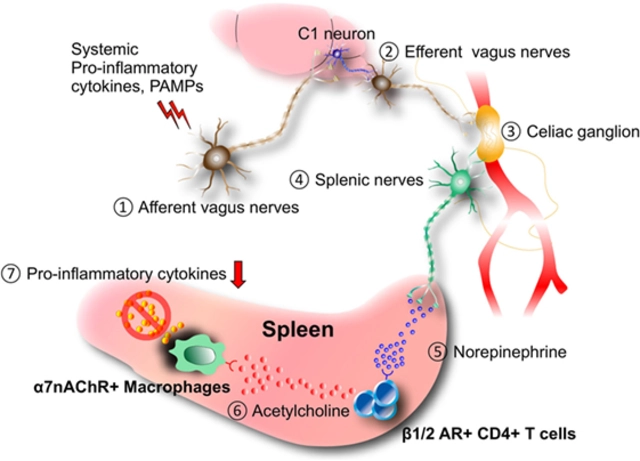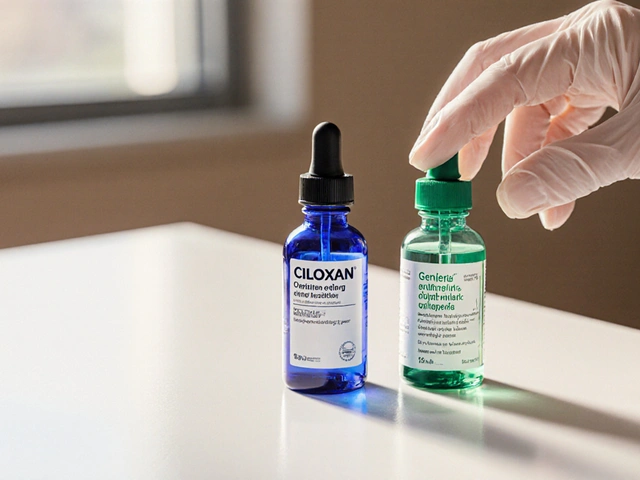Duphaston sits in a tricky space: it’s a well-known progesterone tablet (dydrogesterone) used across Europe and Asia for period problems, fertility support, and some pregnancy complications-yet access and advice vary by country. If you’ve just been prescribed it, or you’re wondering whether it helps with bleeding in early pregnancy or IVF, you want straight answers, not vague reassurance. Here’s a practical, evidence-aware guide you can actually use.
What you’re likely trying to get done right now:
- Figure out what Duphaston is and whether it fits your situation (period issues, fertility, early pregnancy bleeding, endometriosis).
- Know the usual ways doctors use it and what doses look like-without guessing.
- Understand side effects and red flags so you can stay safe.
- Compare it to other progesterone options and see what’s realistic in Australia in 2025.
- Have a quick checklist and a mini-FAQ you can reference when things aren’t textbook.
What Duphaston is used for and how it works
Duphaston is the brand name for dydrogesterone, a synthetic form of progesterone. Progesterone is the hormone that stabilises the uterine lining after ovulation and during early pregnancy. When your body doesn’t produce enough, you can see irregular bleeding, painful periods, trouble holding a pregnancy, or a luteal phase that’s too short for an embryo to implant and thrive.
Common doctor-prescribed uses include:
- Irregular or heavy periods (because of progesterone deficiency): to bring on withdrawal bleeding and regulate cycles.
- Premenstrual symptoms: to balance the second half of the menstrual cycle.
- Endometriosis: to reduce the impact of oestrogen on endometrial tissue outside the uterus.
- Luteal phase support in fertility treatment: to support implantation after ovulation induction or IVF.
- Threatened miscarriage: in some countries, used when bleeding happens in early pregnancy and progesterone deficiency is suspected.
Mechanism in one sentence: dydrogesterone binds to progesterone receptors and stabilises the endometrium without some of the androgenic (acne/hair) effects that older progestins can have.
What the research says (short, to the point):
- Fertility/IVF: Oral dydrogesterone (often 30 mg daily) was non-inferior to vaginal progesterone for luteal phase support in two major trials-LOTUS I (2018) and LOTUS II (2019)-for ongoing pregnancy/live birth rates.
- Early pregnancy bleeding: Evidence is mixed. Several RCTs (many from Asia and Eastern Europe) suggest benefit, while the big UK PRISM trial (2019) using vaginal micronised progesterone didn’t show an overall benefit except in women with bleeding and a history of miscarriage. NICE guidance (updated 2023) recommends vaginal micronised progesterone for that specific subgroup; it doesn’t specifically endorse dydrogesterone.
- Cycle control and endometriosis: Longstanding clinical use with supportive studies and lab data; regimens vary by diagnosis.
Bottom line: it’s a legitimate progesterone therapy with solid data in IVF support and practical use in cycle disorders. For threatened miscarriage, local guidelines differ, and the specific product recommended can vary by country.
How to take it safely: dosing patterns, timing, and what to do if you miss a dose
Don’t self-prescribe. Dose depends on your diagnosis and your history. That said, it helps to know the common patterns so the script you’re holding makes sense.
Typical regimens doctors use (examples, not personal medical advice):
- Cycle regulation or heavy/irregular bleeding: 10 mg once or twice daily for 5-10 days in the second half of the cycle (for example, day 16 to 25). A withdrawal bleed usually follows after stopping.
- Premenstrual symptoms: 10 mg daily from ovulation (often day 14) to day 25, sometimes extended to day 28.
- Endometriosis: 10 mg two to three times daily continuously or cyclically (your specialist sets the schedule).
- Luteal phase support (fertility/IVF): 30 mg daily (split into 10 mg three times daily) starting after egg retrieval or ovulation trigger, continuing until pregnancy testing and often up to 10-12 weeks if pregnant-based on clinic protocol and the LOTUS trials.
- Threatened miscarriage (varies by country): some protocols begin with a loading dose (for example, 40 mg) followed by 10 mg every 8 hours, then taper when bleeding stops; others use 10-20 mg two to three times daily. Your doctor will choose based on local guidelines.
How to take it so it actually works:
- Take it at the same times every day. With or without food is usually fine-consistency wins.
- If you forget a dose, take it when you remember unless you’re close to the next one. Don’t double up.
- If you vomit within an hour of a dose, you likely didn’t absorb it-call your clinic if you’re on a fertility protocol; otherwise, take the next dose at the usual time.
- Don’t stop suddenly in early pregnancy unless your doctor tells you to. Stopping abruptly can trigger withdrawal bleeding.
- Tell your doctor about all meds and supplements. Liver enzyme inducers (like carbamazepine, phenytoin, rifampicin) and St John’s wort can lower levels.
When to seek help fast:
- Heavy bleeding, severe lower abdominal pain, or shoulder-tip pain in early pregnancy (possible ectopic pregnancy)-urgent care.
- Yellowing of skin/eyes, dark urine, severe itching (possible cholestatic liver issue).
- Sudden chest pain, shortness of breath, or one-sided leg swelling (blood clot symptoms-rare with progesterone alone but not zero risk if you have other risk factors).

Side effects, safety, and who should avoid it
Most people tolerate dydrogesterone well. If you do feel off, it’s usually in the first one to two cycles and often settles as your body adjusts.
Common side effects:
- Headache, dizziness, sleepiness.
- Nausea, bloating, mild abdominal discomfort.
- Breast tenderness.
- Mood changes (irritability, low mood).
- Breakthrough spotting or light bleeding early on.
Less common but important:
- Skin rash or itching.
- Fluid retention or ankle swelling.
- Liver-related issues (rare): dark urine, pale stools, jaundice, right upper abdominal pain.
Who should have a careful chat with their doctor first:
- Active or past liver disease, including cholestasis in pregnancy.
- History of blood clots or a strong family history of thrombosis at a young age.
- Unexplained vaginal bleeding that hasn’t been assessed.
- Known hormone-sensitive cancers-your oncologist needs to weigh in.
- If you’re on enzyme-inducing medicines (certain epilepsy drugs, rifampicin) or herbal St John’s wort-doses may need adjusting, or another route may be better.
Pregnancy and breastfeeding:
- Pregnancy: widely used in early pregnancy support in many countries. Decades of use and registry data haven’t shown an increased risk of major birth defects with dydrogesterone. Use should still be guided by a clinician and local guidelines.
- Breastfeeding: small amounts may pass into milk; labels differ by country. Some doctors prefer micronised progesterone in breastfeeding. If you’re lactating, ask specifically about the product your doctor has in mind.
Drug testing and driving:
- Drowsiness can happen. If you feel woozy, don’t drive or operate machinery until you know how you react.
Allergic reactions are rare but can be serious. Hives, swelling of lips/tongue, trouble breathing-call emergency services.
Duphaston vs other progesterone options (and what’s realistic in Australia in 2025)
Not every progesterone is the same. Your doctor chooses based on why you need it, side-effect profile, local availability, and guideline preference.
| Option | Form | Typical use | Evidence highlights | Pros | Considerations | Australia 2025 |
|---|---|---|---|---|---|---|
| Dydrogesterone (Duphaston) | Oral tablet (10 mg) | Cycle control, endometriosis, luteal support, threatened miscarriage (varies) | LOTUS I/II: non-inferior to vaginal progesterone for IVF luteal support | Oral convenience, often well tolerated | Mixed evidence in threatened miscarriage; product availability varies | Not routinely stocked; check ARTG/TGA status; may require Special Access Scheme |
| Micronised progesterone | Vaginal capsules/gel; oral capsules | IVF luteal support, early pregnancy bleeding with prior miscarriage (per NICE), HRT | PRISM trial subgroup benefit; strong IVF usage | Aligned with UK/NICE for specific pregnancy subgroup | Vaginal route can be messy; oral form may cause drowsiness | Widely used; various brands available; PBS coverage depends on indication |
| Progesterone pessaries/gel | Vaginal | Fertility protocols | Long track record in IVF | Local high concentrations at the uterus | Local irritation/discharge | Common in fertility clinics |
| Medroxyprogesterone acetate | Oral/injectable | Cycle control, endometrial protection (HRT) | Not for supporting pregnancy | Strong endometrial effect | Not used for early pregnancy support | Available; not a substitute in pregnancy |
Australia-specific reality check:
- Availability: Dydrogesterone has historically not been widely available here. As of 2025, it’s still not a common pharmacy item. Your doctor can check the TGA ARTG register and, if needed, consider the Special Access Scheme (SAS) for individual patients.
- Guidelines: Australian practice often mirrors evidence used in the UK/Europe but sticks to products actually available locally. For early pregnancy bleeding with a history of miscarriage, many clinicians reach for vaginal micronised progesterone because it’s accessible and aligned with NICE.
- Cost: If dydrogesterone is accessed via SAS or private import, expect higher costs and longer lead times than locally stocked alternatives.
How to choose in real life:
- If you’re on IVF in Australia: your clinic likely uses vaginal progesterone or oral micronised progesterone. Some clinics may offer dydrogesterone when accessible and appropriate; protocols vary.
- If you’re bleeding in early pregnancy and have had one or more previous miscarriages: time matters. Many Australian EDs and early pregnancy units use vaginal micronised progesterone, which is available and guideline-backed for that subgroup.
- If your issue is irregular cycles or PMS: either dydrogesterone or oral micronised progesterone may be considered; the choice often comes down to availability, side effects, and your doctor’s experience.

Quick checklists, examples, and your most common questions
Use these like a cheat sheet when you’re stressed and don’t want to scroll back up.
Safe-start checklist
- Confirmed the reason you’re taking it (cycle control, fertility, early pregnancy bleeding, endometriosis)?
- Got a clear dose and timing plan in writing?
- Told your doctor about liver issues, clots, migraines with aura, or strong family history of thrombosis?
- Listed all medicines and supplements, especially enzyme inducers and St John’s wort?
- Know what to do if you miss a dose or vomit after taking it?
- Have a number to call if bleeding worsens or pain spikes?
Side-effect triage
- Headache or nausea? Try taking with food, hydrate, small snack. If persistent after two weeks, call your prescriber.
- Drowsiness? Shift doses earlier in the evening; avoid driving until you know how you feel.
- Spotting? Common in the first cycle; if heavy or with pain, get checked.
- Itchy rash or yellowing eyes/skin? Stop and seek medical care.
Everyday examples
- You’re 7 weeks pregnant with light bleeding and had two prior miscarriages: in many Australian services, you’ll be offered vaginal micronised progesterone as per NICE-style practice. If dydrogesterone is suggested, ask about access and evidence in your setting.
- You’re on IVF and hate vaginal gel: LOTUS trials support oral dydrogesterone as non-inferior to vaginal progesterone for luteal support. Ask your clinic if they can source it safely, or if oral micronised progesterone is an option.
- Your periods are irregular and heavy: a common plan is progesterone for days 16-25 to stabilise the lining and bring on a predictable bleed. If you also need contraception, that’s a different treatment conversation.
- Endometriosis pain flares mid-cycle: continuous or long-cycle progestin therapy (including dydrogesterone where available) can help. Your specialist will tailor the regimen and may combine it with other treatments.
Mini-FAQ
- Is dydrogesterone the same as natural progesterone? No. It’s a synthetic molecule designed to act like progesterone at the receptor. It doesn’t convert to other hormones like testosterone or oestrogen.
- Does it prevent miscarriage? No medicine can guarantee that. In specific scenarios-like early bleeding with a history of miscarriage-progesterone support can help some women. The exact product and route depend on local guidelines and availability.
- Will it affect a pregnancy test? No. It doesn’t change hCG levels.
- Can I drink alcohol? Light to moderate alcohol doesn’t directly interact, but if you’re trying to conceive or pregnant, many doctors recommend avoiding alcohol.
- Can I take it with metformin or thyroid meds? Usually yes, but keep a 2-3 hour gap if you’re timing-sensitive with thyroid tablets, and clear the plan with your doctor.
- What if I start bleeding while on it? Light spotting can happen. Heavy bleeding, clots, or pain need medical review promptly.
Evidence and guidance notes (so you know this isn’t guesswork)
- The LOTUS I (2018) and LOTUS II (2019) trials compared oral dydrogesterone with vaginal progesterone for luteal phase support and found non-inferior pregnancy outcomes.
- The PRISM trial (2019) assessed vaginal micronised progesterone in women with early pregnancy bleeding; the overall group saw no benefit, but there was a benefit for women with bleeding and at least one previous miscarriage-this shaped NICE’s 2021/2023 recommendations.
- Cochrane reviews (latest major updates around 2021) discuss progestogens for threatened and recurrent miscarriage, noting variable study quality and the importance of patient selection.
- Product information from European regulators (SmPC) details approved uses, dosing ranges, and safety data for dydrogesterone.
Next steps and troubleshooting by situation
- If you can’t find dydrogesterone in Australia: ask your prescriber about locally available alternatives (vaginal or oral micronised progesterone). If you specifically need dydrogesterone, discuss the TGA Special Access Scheme-be aware of delays and cost.
- If bleeding starts in early pregnancy: don’t self-start anything. Get a same-day assessment to rule out ectopic pregnancy, check hCG, and confirm viability. If you qualify for progesterone support, starting sooner is better.
- If you’re midway through IVF: don’t swap products without your clinic’s approval. Changing route or dose without supervision can jeopardise luteal support.
- If side effects are rough: many settle in 1-2 weeks. Simple timing tweaks help. If headaches or mood shifts persist, your doctor can adjust dose, switch route, or try a different formulation.
- If you’re peri-menopausal or on HRT: dydrogesterone is used in some HRT regimens overseas to protect the endometrium. In Australia, micronised progesterone is commonly used. Your GP or menopause specialist can tailor a safe plan.
One final practical tip: keep a simple diary for the first month-dose times, any symptoms, and bleeding pattern. It makes follow-up visits faster and more precise.







August 30, 2025 AT 07:03
If you think Duphaston is a miracle cure, buckle up for a reality check.